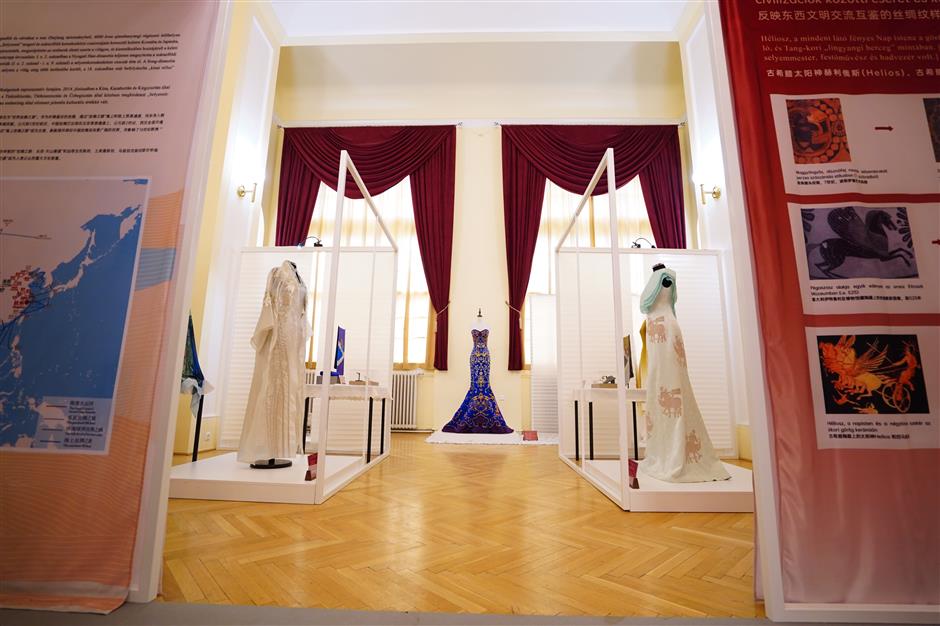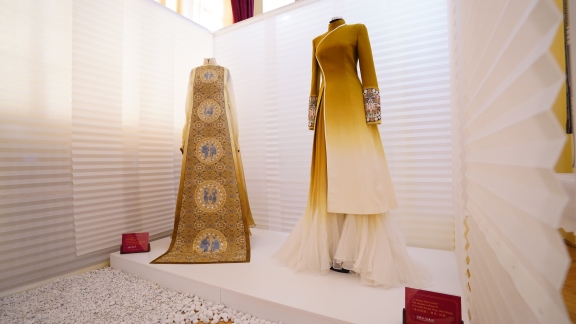The China National Silk Museum, the country’s largest silk history study institution, holds events every year to highlight the Silk Road’s cultural heritage.
The Silk Road Week celebration is now coming to an end with an exhibition in Hungary.
About 70 copies of ancient silk fabrics and contemporary garments from the museum are on display at the Museum and Library of Hungarian Agriculture until December 3.
Over 200 organizations and institutions from all over the world have participated in the cultural extravaganza since it began in 2020 with the support of the National Cultural Heritage Administration and the Zhejiang provincial government.
This year also marks the 10th anniversary of the Silk Road Economic Belt and the 21st Century Maritime Silk Road, known as the Belt and Road Initiative.
This year’s Silk Road Week’s Guest of Honor is Hungary, the first European country to join the Belt and Road Initiative. With the title “Charm of the Silk Roads: Auspicious Designs on Chinese Silk Art,” the exhibition strives to reinvigorate Eurasia’s cultural linkages.
Visitors visiting the exhibition can see relics resembling historical garments, fabric weaving technologies, and various aesthetics along the ancient Silk Road. The centerpieces are made from replica fabrics from the Han (206 BC – AD 220) and Tang (AD 618-907) periods.

Ti Gong
About 70 copies of ancient silk fabrics and contemporary garments are on display at the Museum and Library of Hungarian Agriculture.
Ti Gong
With the title “Charm of the Silk Roads: Auspicious Designs on Chinese Silk Art,” the exhibition strives to reinvigorate Eurasia’s cultural linkages.
Throughout history, a plethora of animals and plants were imported to China from the West, enriching the lives of the Chinese people. Foreign envoys brought their native animals and plants as gifts to the imperial court, while merchants went thousands of miles to sell them in China, including lions, elephants, peacocks, pomegranates and tomatoes.
The displayed samite with a lion in a floral medallion could be evidence of the import of exotic animals and plants millennia ago. The flowers, which have peony-like petals and pomegranate-like buds, encircle a standing lion. Such a fusion of Western animals and flora with Oriental aesthetics became a frequent motif throughout the Tang Dynasty.
Camels were relatively unknown in ancient China until the Silk Road was established during the Han Dynasty. According to historical records, a caravan of camels entered the present-day Henan and Shaanxi provinces, eventually becoming the main mode of local transportation. As a result, the animals appeared frequently on silk products in ancient times.
The featured fabric patterns represent changing social aesthetics as well as evolving weaving methods. Aside from Silk Road antiques, the exhibition also showcases the embroidery skills of ethnic minorities in China.
A pair of traditional Miao folk boots features tie-dyed patterns and symmetrical auspicious butterfly images. Through the years, the Miao people have evolved their own traditions and culture. Butterflies are revered as the Miao people’s mother in tradition and frequently embroidered on their clothing and accessories.
The Silk Road’s Chang’an-Tianshan Corridor was named a UNESCO World Heritage Site in 2014. Since then, the China National Silk Museum has served as a hub for cultural exchanges among institutions and organizations throughout the ancient Silk Road route.
The China National Silk Museum unveiled its Global Showcase project during the inauguration ceremony in Budapest, which would hold a series of exhibitions about silk culture and the Silk Roads around the world via an online digital platform and offline boutique exhibits.
For years, the silk museum has combed through collections and intangible cultural heritage related to silk before setting up a digital display platform.
At the same time, it has chosen collections that represent Chinese traditional costumes as well as modern-day innovative designs that are easily kept and carried to international exhibitions.
“The museum will strive to build the Global Showcase into an innovative, diversified cultural publicity and display platform to promote exchanges and cooperation between China and other countries,” said Ji Xiaofen, curator of the silk museum.

